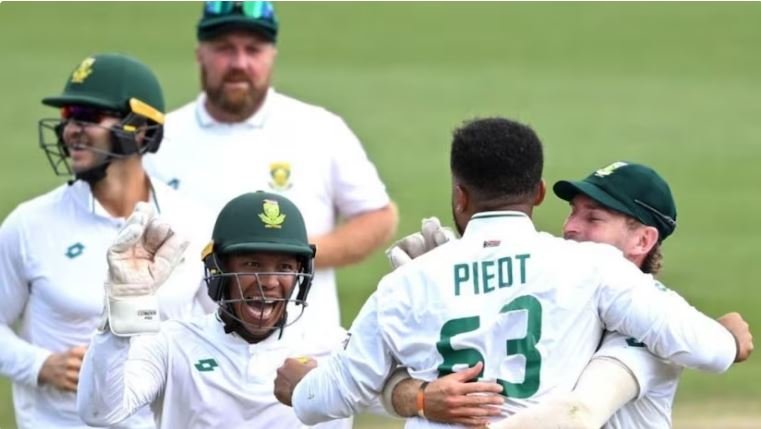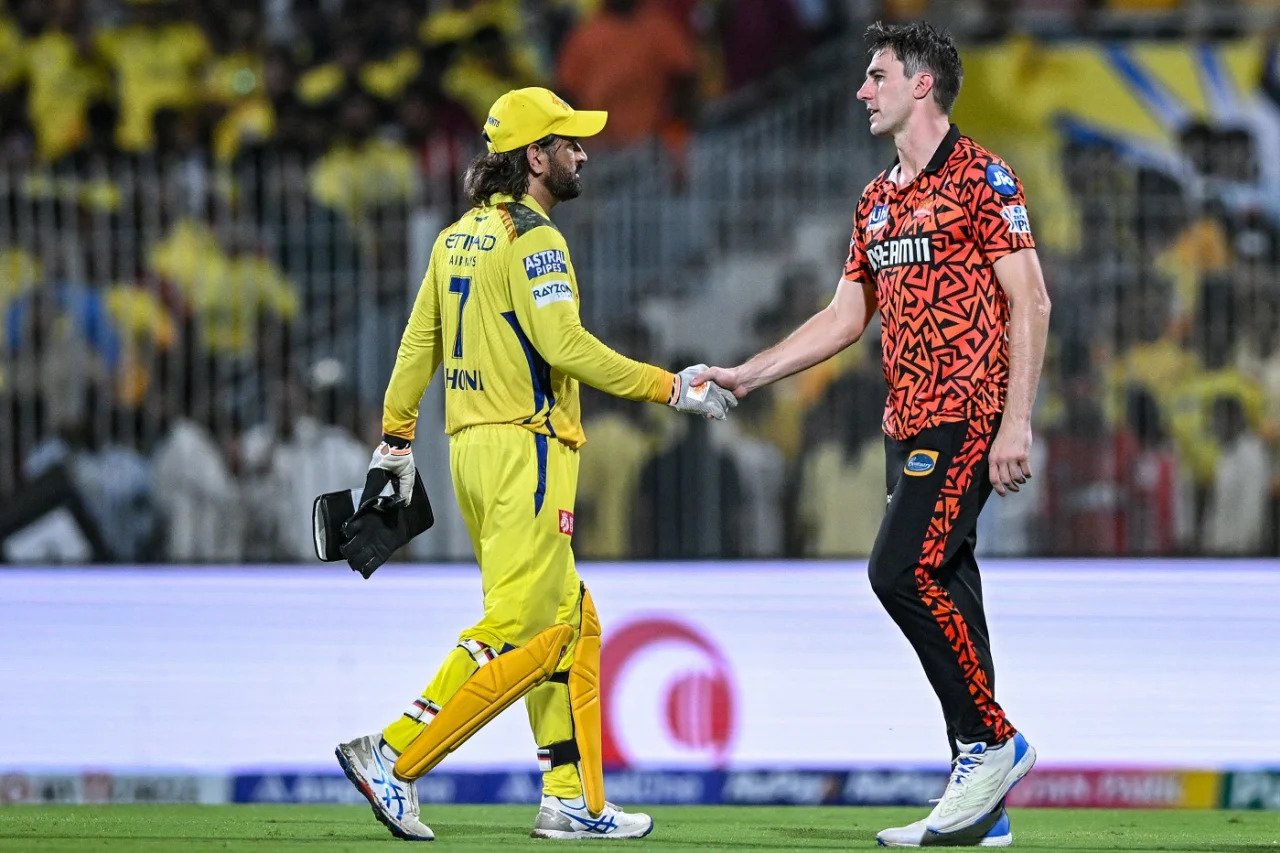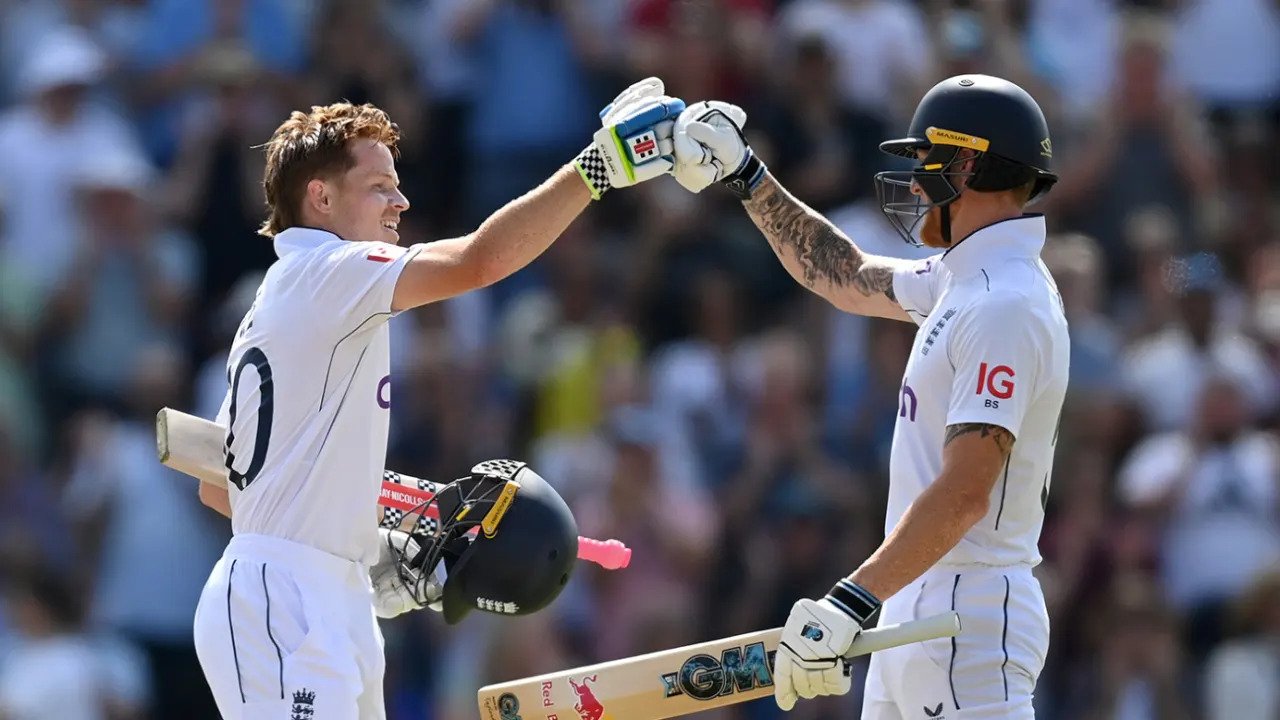Review of 2011 Cricket World Cup between India and Sri Lanka:
India reclaimed the title that Kapil Dev and his team had originally lifted at Lord’s in 1983, and they did it in their own backyard, twenty-eight years after the contest that changed the course of international cricket. Gautam Gambhir’s iron-willed 97 was equaled in intensity to the best captain’s innings since Ricky Ponting in Johannesburg eight years ago, as MS Dhoni overcame Mahela Jayawardene’s poetic century to pull off the biggest run-chase in World Cup history.
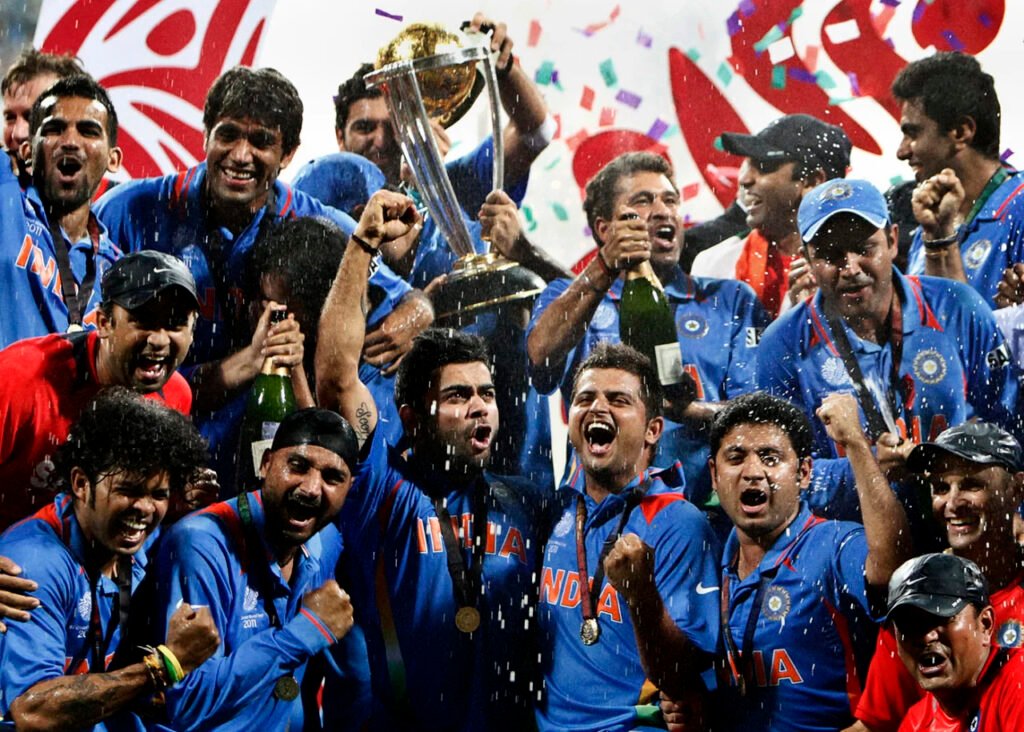
In front of an exuberant crowd at the Wankhede Stadium, Dhoni—who had moved up to No. 5 in order to put more pressure on himself—sped through the gears as the victory target approached, sealing the win by six wickets with ten balls remaining.
He needed to score 15 runs from 17 balls, so he flicked Lasith Malinga, Sri Lanka’s only real threat, through midwicket for two consecutive boundaries. He then smoked Nuwan Kulasekara over long-on to end with 91 not out from 79 balls, setting off the most wild celebrations on the subcontinent.
Still, the final margin did not fully reflect the fierce competition that had preceded it. The audience overpowered Kumar Sangakkara’s first call, so even the toss was contested; yet, Zaheer Khan’s day’s ups and downs summed up the vicissitudes of a gripping fight.
In a brilliant 5-3-6-1 session, Zaheer started his account with three straight maidens and the wicket of Upul Tharanga. However, in his ninth and tenth overs, he was thrashed for 17 and 18 runs as Sri Lanka amassed 63 runs in the batting Powerplay to score an overwhelming 274 for 6.
And before the team’s fortunes started to turn around, India’s day grew considerably worse. In six of India’s previous eight innings in the tournament, Virender Sehwag had smashed a boundary off the opening ball. However, this time, Malinga’s slingers delivered him a second-ball duck when he dragged a full delivery into his back pad.
Then, after seemingly writing the script himself, quick Malinga outswinger pulled Sachin Tendulkar into a loose drive after he had put the stadium on notice with eighteen magnificent runs from his opening twelve deliveries.
When India found themselves down 31 for 2 in the seventh over, they were finding it impossible to maintain their lead in the match. A few disloyal spectators gave up and left. However, Virat Kohli and Gambhir represent a generation that does not give up easily, and their 83-run partnership at the third wicket set the stage for a historic comeback.
Due to the unfortunate loss of Angelo Mathews to a thigh strain and the possibility of a seam-friendly surface, Sri Lanka made four significant changes to the squad that defeated New Zealand in Colombo. Moreover, Muttiah Muralitharan did not perform well in his final wicketless game of his 19-year career, so Malinga by himself was not enough to win.
Although Thisara Perera and Kulasekara’s powerful hitting had been crucial in driving Sri Lanka’s total to such heights, their major function as front-line seamers was to lack menace and be too easy to pinch, as evidenced by the 119 runs they managed in their combined 17.2 overs.
Also Read: India vs England 2013 Champions Trophy Final
When a diving Kulasekara dropped Gambhir, 30, at long-off, the new addition to the team, Suraj Randiv, raised a moment of anxiety with his high-kicking offspin, but as the innings went on, his lack of cunning proved expensive. For years to come, Sri Lanka will be haunted by the choice to leave out Ajantha Mendis and Rangana Herath, whose combined efforts had proven so successful against England and New Zealand.
However, there was still a victory to be won, and India discovered the men who were prepared to do it. After replacing the departing Tendulkar with the 22-year-old Kohli, who was met with stern words of encouragement, he showed all the strength for the momentous occasion, coasting to 35 from 49 balls before being caught by Tillakaratne Dilshan, who dived full-length across the crease to intercept a leading edge.
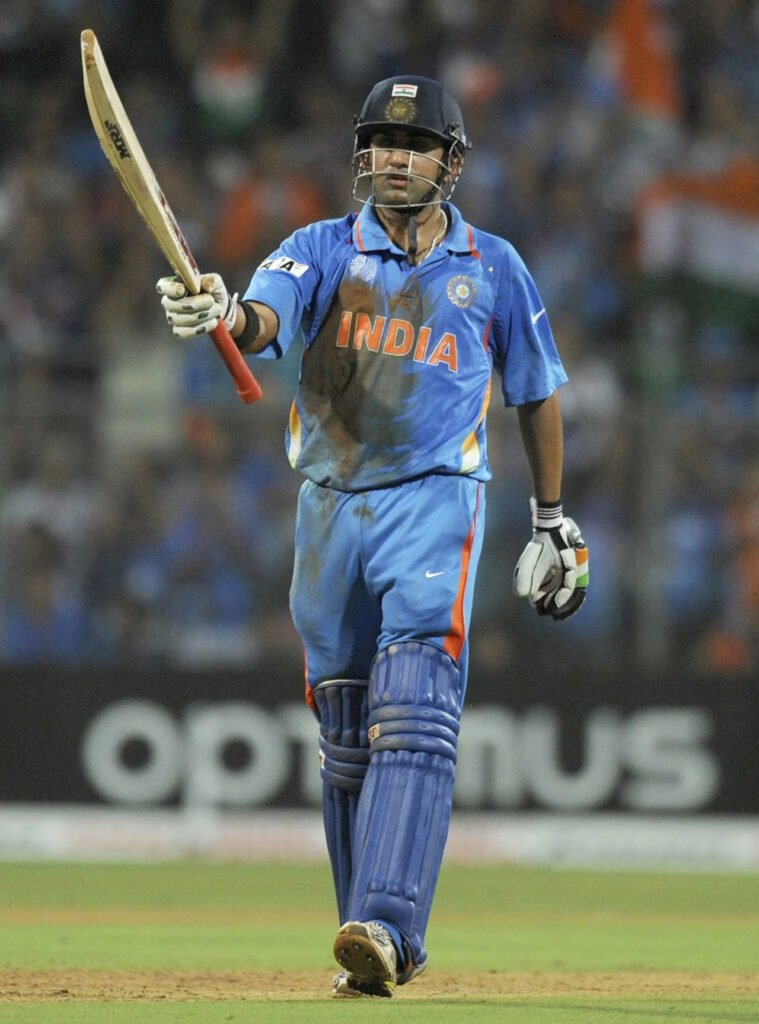
But the final say has to go to Gambhir and Dhoni. Even when Gambhir lost the chance for a memorable century with a worn-out charge and slash at Perera, their 109-run partnership was the greatest by an Indian combo in three World Cup final appearances. The outcome was also assured.
As the crippling Mumbai heat took its toll, Gambhir and Dhoni both needed treatment for sore backs. Gambhir hit nine fours in a 122-ball declaration of indomitability. After some hard work from the physiotherapist, Dhoni was able to return to his usual stance and respond with another trademark filleting of the extra cover boundary, where he scored six of his eight fours, three of which helped to blunt Murali’s attacking instincts. At one point, he appeared so immobile that a precautionary retirement seemed the only sensible course of action.
There were many experienced players from both teams who had lost World Cup finals; in fact, five Indians were still playing from the team that had lost to Australia in 2003. Consequently, this was a match full of performances that demonstrated the value of experience.
Despite the fact that seven of the nine teams that had the opportunity to bat first and all five of the previous centurions in the finals had gone on to win the trophy, Jayawardene had the misfortune of breaking both of these norms. His incredible 103 not out from 88 balls demonstrated that skill can be just as important at this level as violence, but in the end, it was unable to prevent India from realising their destiny.
Jayawardene led his team to their second World Cup final four years ago at Sabina Park with an incredible century against New Zealand, but this was an even more masterful performance. After Zaheer’s outstanding new-ball performance had crushed his side at 60 for 2, he arrived at the crease in the 17th over. However, he reacted from a run a ball with a pace that hardly faltered until he opened his shoulders to power through to his hundred from 84 balls, accompanied by Kulasekara.
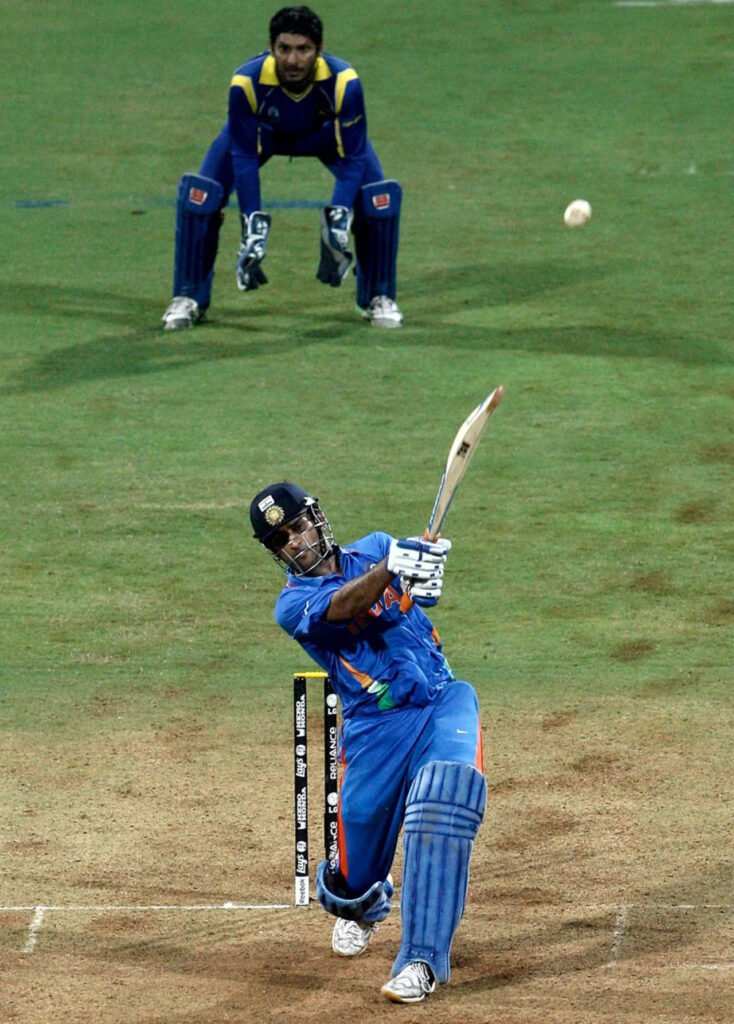
Cool heads were required for such a momentous occasion, and even though Zaheer’s final stats did not reflect it, he was the coolest person in the first few exchanges.
Under his leadership, the unfortunate Tharanga was restricted to two runs from 20 balls before snicking to Sehwag at slip, whose sharp low take typified a fielding effort that was rarely less than totally committed. Sri Lanka were also limited to 31 for 1 in their mandatory Powerplay, their lowest ten-over score of the tournament. Then, on his way to matching Shahid Afridi as the tournament’s top wicket-taker with 21, Zaheer tricked Chamara Kapugedera with a gorgeous slower ball that was hit to short cover when he came back in the 37th over.
Nevertheless, it was amazing how quickly his figures were defaced. Even though each of Jayawardene’s 13 fours was a sophisticated shot in and of itself, none of them could top the final one, which was an inside-out cover-drive to one of Zaheer’s signature outswinging yorkers. Zaheer had planned the late movement and had filled the ring of fielders on the off-side.
But the clear acceleration came from the other end, when Kulasekara hit 32 off 30 balls before Jayawardene thanked him as they left for his selfless run-out. The noise level in the Wankhede had dropped dramatically by the time Perera, who finished with 22 off nine balls, completed his onslaught with a devastating thump for six over midwicket.
With the certainty that several billion of their fellow countrymen were putting all their hope in their actions, India, run by run, over by over, minute by minute, got up, dusted themselves off, and turned the screw on Sri Lanka with a determination that a lesser group of men could not have begun to muster.
Even though he was merely a supporting character in the larger story, Tendulkar was the one to chair the celebrations from the field as they got underway. The young Kohli remarked, “He’s carried the burden of our nation for 21 years.” “It was time to carry him on our shoulders today.”
Post Match Celebrations
As Team India won the World Cup in its own nation, there were spectacular celebrations. Indians were celebrating, yelling, and waving Indian flags throughout the stadium. Kumar Sangakkara, the captain of Sri Lanka, stated during the post-match press conference that the Indians batted really well and that it “looks like you need to make something like 350 runs to put them under pressure.”
The Indian captain, MS Dhoni, then stated that he was motivated to perform well in order to defend some surprising choices he had made for this game, such as starting Sreesanth over Ashwin and moving up the order above Yuvraj. Man of the Match went to MS Dhoni for his impressive and game-winning batting performance while under duress. Because of his strong overall performance throughout the tournament with both the bat and the ball, Yuvraj Singh was voted Man of the Tournament.
An elated Indian squad held the Cup for the first time after the presentation amid confetti and champagne showers. There were tears in the eyes of a few Indian players, including Yuvraj Singh, Harbhajan Singh, and Sachin Tendulkar. After that, the group led legendary player Tendulkar around the stadium in a victory lap. Afterwards, coach Gary Kirsten was also carried around the campus.
Tendulkar was the recipient of a victory tribute by the Indian players, with Virat Kohli stating, “He has carried the nation’s burden for 21 years.” We ought to have carried him on our shoulders by now.” Gautam Gambhir dedicated the triumph to the military manning India’s borders as well as the victims of the 26/11 Mumbai attacks. The night was spent in the team hotel celebrating. India celebrated the triumph with a number of fireworks displays and festivities.



